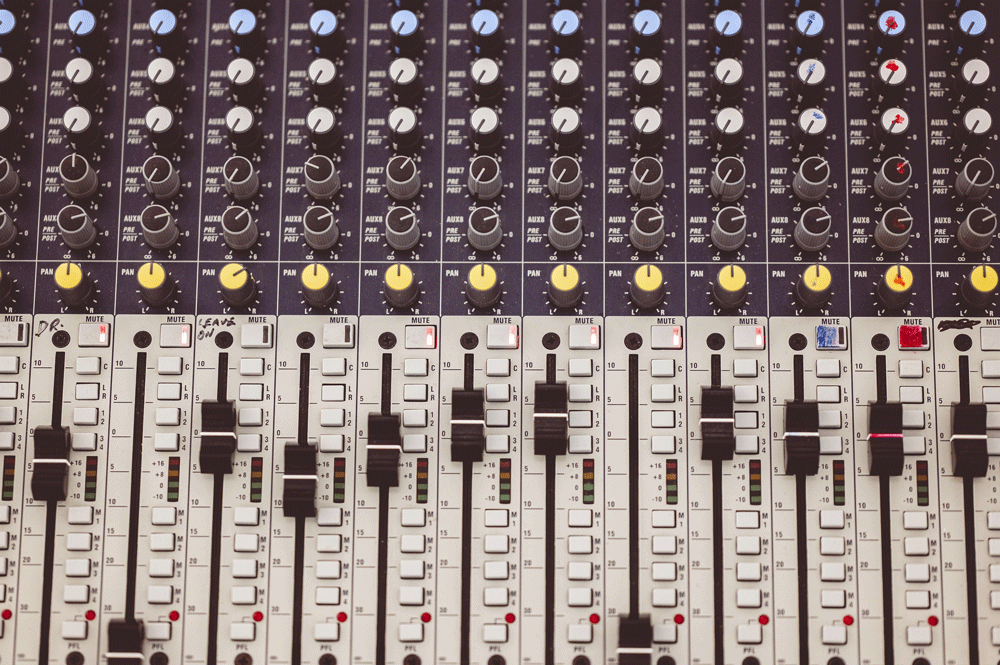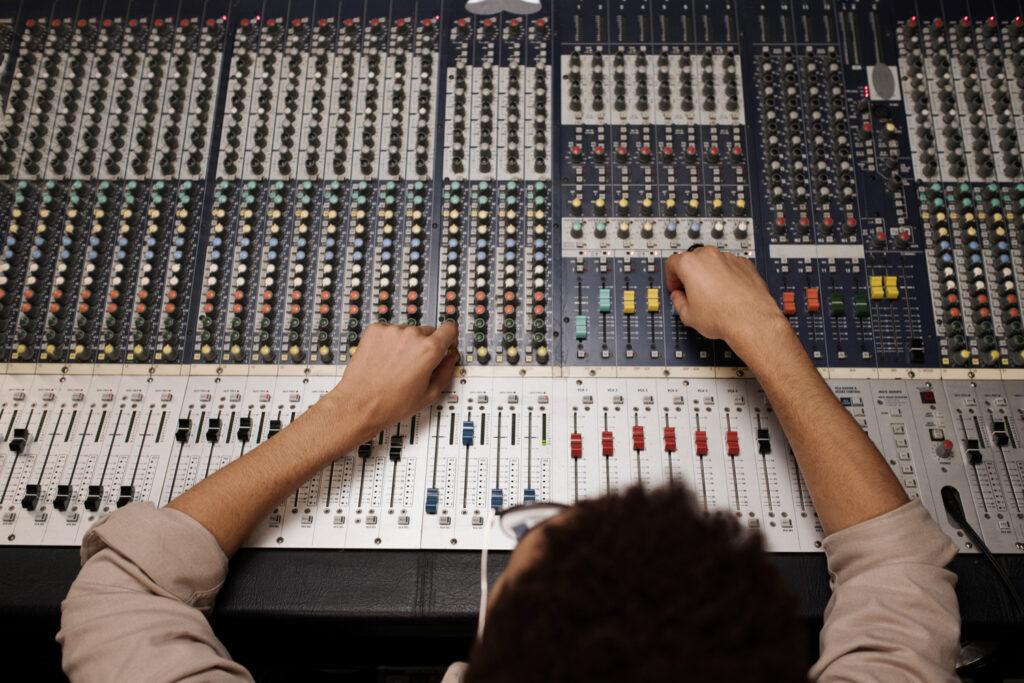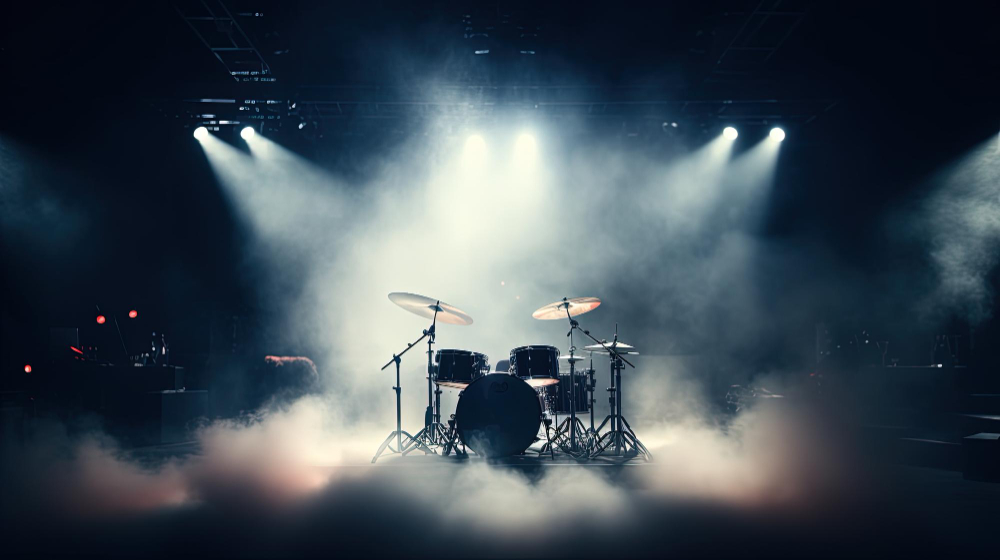Low frequencies often place a challenge for an audio engineer. Mixing low end clear and energetic is crucial for different genres, especially hip-hop, pop, hard rock, and many others. Due to the specifics of long sound waves, the instruments that fall in this range often produce frequency masking, clash, or create unwanted muddy sound. So you need to mix low end very carefully.
Understanding low frequency range
First, let’s consider the sound waves we are working with. How they are measured, and why the low-end mixing is so tricky.
What is frequency
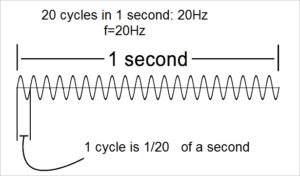 Frequency is the property of a sine sound wave which is measured in Hz. This measure shows how many cycles of this sine wave occur during 1 second.
Frequency is the property of a sine sound wave which is measured in Hz. This measure shows how many cycles of this sine wave occur during 1 second.
Each frequency is a particular note or pitch.
The frequency spectrum
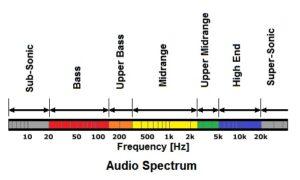 Here is the picture of the frequency spectrum.
Here is the picture of the frequency spectrum.
From 20 Hz which is close to human hearing low-frequency limit and up to 250 Hz of upper bass, here is where we’ll find bass elements. Then the bass is followed by other instruments in the midrange frequencies and up to high frequencies.
Top 3 goals in mixing bass frequencies
The instruments and sounds that fall in the range of low end are kick drums and bass (guitar, synth bass, or 808). Low piano chords may also fit in the
bass range but most often what we see in a mix in the low end are kick drum and bass.
Mixing low end the audio engineer achieves these goals:
- make the low end loud and powerful
- create room for each instrument
- create balance between the instruments
Without consistent and powerful low end most of the songs will not survive. Bass frequencies build the base, the foundation of the composition, which produces powerful and rich sound. That is why kick drums and bass are almost never panned to sides, they are placed in the middle and mixed in mono.
The mixing environment
First of all, you need to mix using good professional monitors, not headphones! Especially if we are talking about mixing bass guitar, kick drum, and other low-end instruments.
However, with using monitors comes the need for acoustic treatment for your studio room. An untreated room with hard straight walls is the worst-case scenario. Sound waves reflect from walls and travel across the room. They become trapped, reflecting back and forth, and all this mess you will hear together with your music. There is absolutely no chance of creating a good mix in a room that doesn’t have acoustic treatment.
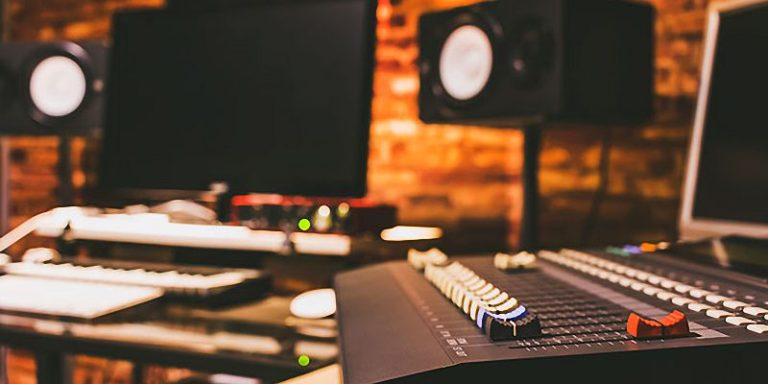
Preparing a room for mixing and placing the monitors is another broad topic, you can read about it in another article, but here we will just say that your studio should be professionally prepared. You can use bass sounds traps, acoustic panels, proper sound-reducing wall cover, and other tricks. It’s also good if the shape of the room works in your favor.
If you don’t have the needed experience or equipment, don’t worry. Contact us for online mixing and mastering, and we’ll help you with mixing your song. We have helped hundreds of artists, completed thousands of projects. Our clients sign contracts with record labels.
So, if you want to receive a professional mix quickly and with no troubles at all, just contact us, place your order, and you’ll receive the professional, industry-level mix from us in less than three days.
Creating space for kick and bass sound in the mix
We need to place them in such a way, that their sounds interfere as little as possible. This is because low-frequency waves joined together very often cause masking, some frequency interference, and almost always a muddy sound. Let’s first look at kick and how we clean the frequency space.
Working with kick shape and frequencies
What we need is a short kick sound that will give the rhythm to our music. But often as we look at kick wave, we see that the sound is fading for some time, creating a “tail” after kick hits. Using equalizer we can clear the kick frequencies, leaving the kick only in the small frequency band that is crucial for its sound. This way we will clear frequency space giving more room for other instruments. And most probably, we’ll reduce the tail as well, as it tends to wander off frequency-wise. Remember that using equalizer at this stage, we need to cut, not boost.
You might also want to cut out some unwanted pitches like buzzing on certain frequencies in the kick using EQ, and shape the frequency of the kick drum as you like it. You may also tune it to match the main key of the song, or dominant (5th note of the scale). Sometimes it could benefit the music and glue the kick more to the harmony.
Using compression on the kick drum
To make the sound of the kick more consistent, use compression on the kick. A fast attack and fast release will help make a solid and sharp drum sound. The slow attack may create a punchy sound.
Mixing the bass guitar
At first, you may use equalizer to reduce all the non-essential frequencies for this instrument. This way you will highlight the needed frequencies and free some space in the mix.
Using compression on buss guitar, remember, that chords here fade slowly. On the contrary to the kick, the fading of notes are important and beautiful, and you need to use a medium or fast attack and slow release for compression to include the whole sound in the effect.
Uniting kick drum and bass guitar
Most often, the kick drum holds the main rhythm of the music and has the leading role. Then we’ll place it on top of the bass. However, in some genres, like Reggae, for example, the bass part could appear to be more important, and then we’ll have to clear space for kick more carefully, putting the bass guitar on top.
When we unite kick drum and bass guitar in the mix, first we need to check their main frequencies, how much they overlap.
Regarding kick and bass sound there can be two situations:
- Main frequencies for kick and bass greatly overlap
- Kick is pretty low, or bass is pretty high, anyways, their main frequencies don’t overlap
If you get situation B, you can cut the high-end frequencies in the kick, and the low end in the bass, as much as needed to separate them. Now they are playing each in its own frequency band and are not interfering with each other.
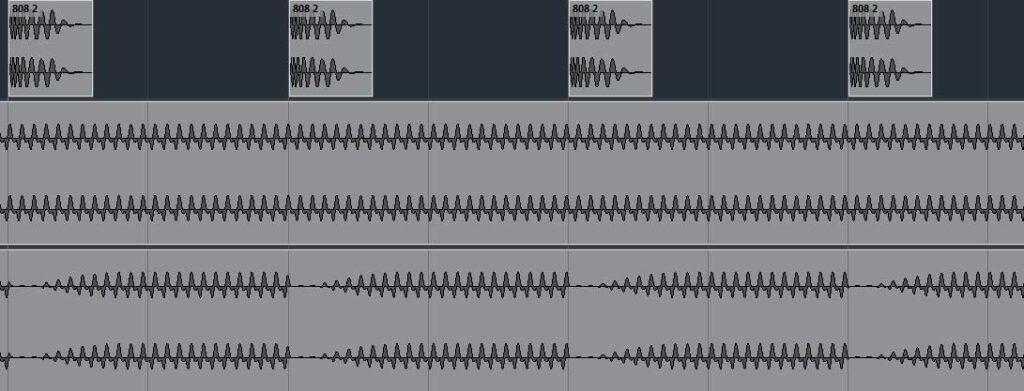 In situation A, the most popular approach is sidechain compression. Apply the compression on the bass, controlled by the loudness of the kick. Use it to make the bass quieter when the kick hits.
In situation A, the most popular approach is sidechain compression. Apply the compression on the bass, controlled by the loudness of the kick. Use it to make the bass quieter when the kick hits.
You can also use a multiband sidechain compression if the frequency ranges of the instruments overlap only partially. The multiband compression will allow you to affect only the needed frequencies of the bass.
Balancing the low end
As the basis of the mix, bass and kick should be placed in the center. And they also should be loud. But how much loud? As we know, a human ear perceives low frequencies as quieter compared to midrange frequencies. How much quieter, we can see in this picture.
Each curve here represents the sounds that we feel as of similar volume. The chart is called Fletcher–Munson curves, by the names of the scientists who created it. Following one line you can see how the low-end waves need to be louder, but the midrange waves can be quieter, and yet we’ll feel that they are of the same loudness.
As you also can see in the chart, with a pretty high volume, 120dB, similar to Rock concert volume, low and middle frequencies are perceived almost equally loud. But let’s say your listener turns the song on with an average comfortable volume, 60dB for example, the volume of a normal conversation. Your low-end sound must be much louder than the midrange instruments, in this case, to keep up with the rest of the music.
So, use your ears to balance the volume, and don’t listen to the song too loud while mixing, or you’ll be risking mixing the low end too quiet.
Can bass and kick be too low?
Bass frequencies are the basis of a song, and low-end mixing has to establish this basis of the bass. But how far to the low end should I place it? Do I need to go down to the lowest frequency?
The bass tone that we feel more than hear
As we know, the threshold of human hearing is considered to be around 20Hz. We are able to feel with our body low bass frequencies. The most intense resonation we can feel as vibrations or pumping in the chest.
Low bass frequencies, approximately below 100Hz we can feel with our bodies. Moreover, below 60Hz (sub-bass) we almost don’t hear, we feel the energy of the sound wave.
What bass frequency range is the best?
It can be tempting to play with sub-bass in your song and make it powerful and impressive. Especially if you have a nice studio and great monitors and subwoofers that reproduce low end well.
Your song most certainly will be played on great and loud speaker systems in clubs and at concerts and people will feel the sub-bass sound you are using. But let’s face the reality, the majority of the audience will use their phones, headphones, car radio, and other consumer-level speakers to listen to music. They will use any listening environment. And most of this equipment have very little frequency response below 50Hz.
The advice here is that you can empower your composition with sub-bass, but the energy of your song shouldn’t rely on it. The song should sound with a good low-end bass basis even on average speakers and in headphones. Don’t rely on too much low end. Place the main parts of your bass over 100Hz, so that most of the audience won’t miss the charm and energy of your hit.
Spend your loudness resource wisely
There is another reason to avoid giving room for extremely low frequencies in your mix. Most of your listeners won’t hear them, but those sound waves will still take a part of your song’s loudness. Low bass will be added when the loudness of your song is calculated for streaming on platforms like Spotify, for example.
On a platform, your song will be normalized according to the overall perceived loudness. If some of this wave energy won’t be heard and enjoyed by listeners, it’s wasted. You want to use the maximum available volume on the notes your fans will actually hear and make your song as loud as possible considering the limits of the platform.
High-pass your mix
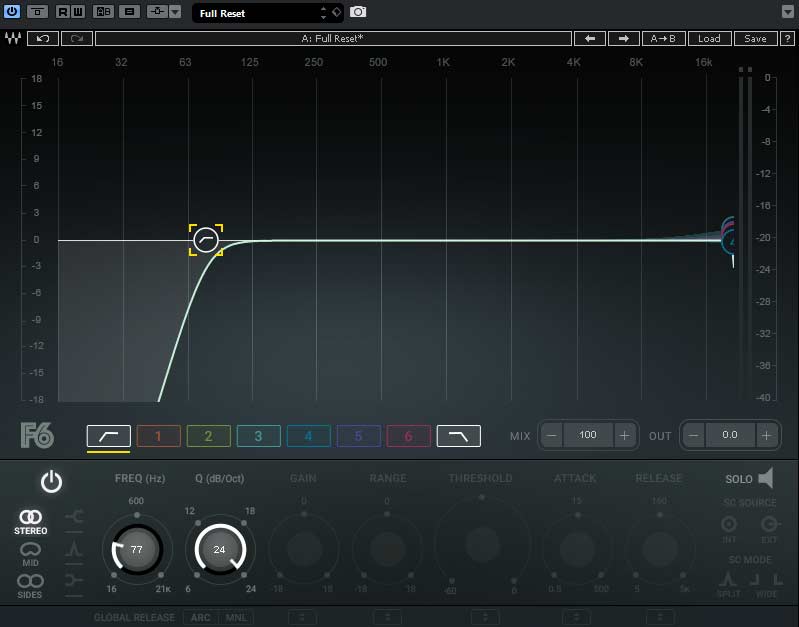 High-pass your mix removing the frequencies below 40, 50, or even 70dB, depending on how low your low end goes. If those frequencies are not essential, remove them by high-passing the mix.
High-pass your mix removing the frequencies below 40, 50, or even 70dB, depending on how low your low end goes. If those frequencies are not essential, remove them by high-passing the mix.
The less super-low frequency energy is in your mix, the more volume will remain for the rest of the music without clipping.
Adding effects to low end
 You may be tempted to add time-based effects like reverb and delay to your bass and kick, but in most cases, we wouldn’t recommend doing it. Reverb or delay will make the kick and bass not clear and spread them across the stereo image more than needed. It also can create extra noise and muddiness.
You may be tempted to add time-based effects like reverb and delay to your bass and kick, but in most cases, we wouldn’t recommend doing it. Reverb or delay will make the kick and bass not clear and spread them across the stereo image more than needed. It also can create extra noise and muddiness.
Distortion, on the other hand, can be pretty useful on lower frequencies. It will also add some useful sound information above 100Hz. Direct the effect to an additional track.
Don’t forget to always compare your work with the reference songs you have chosen. Also, make sure to leave enough headroom, and that there will be no clipping.
Conclusion: What to remember working on the low end of your mix
- The room should be treated for sound
- Use professional monitors with good low-end response, not headphones
- Choose several reference songs and compare the sound you achieve to them many times during the mixing process
- Use a high-pass filter and low-pass filter to remove unimportant frequencies and create more room
- Add compression to make bass sounds in the low end more consistent
- Use multiband compression and sidechain compression to join low-end instruments together if they appear in similar frequencies
- Add distortion to enrich the bass sounds
- Listen to your low end on different volumes to check how it will sound. But do mixing using medium volume. Use your ears to determine the needed loudness for the bass sounds
- Check your mix on consumer-level devices, in stereo and in mono as well.
Choose professional mixing and mastering
If you are an amateur and can not look back to the years of mixing experience, we advise you to trust professional mixing and mastering services with your song.
Each member of our Major Mixing team has worked with big industry-level projects, we helped many artists to take their careers to the next level and sign contracts with record labels.
We have been working with low end for a long time. Our studio is perfectly equipped for mixing powerful bass tones.
Working with us, in 3 days you’ll have a mix of your song that can successfully compete in the music world today. Contact us now, and we’ll be happy to help you with mixing your song!






